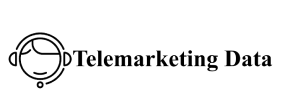For B2B marketers and sales teams, having access to a reliable C-level executive database is critical for targeting high-value prospects. Whether you’re selling enterprise software, consulting services, or high-ticket B2B solutions, engaging C-level contacts like CEOs, CFOs, and CIOs can fast-track decision-making. But a key question arises: should you buy a ready-made list or build your own database from scratch? Both options have distinct advantages and drawbacks. Understanding the differences will help you choose the right strategy based on your goals, budget, and timeline.
Buying a C-Level List: Fast, but Risky Without Vetting
Buying a C-level executive database offers speed and convenience. Within hours, you can have access to thousands of contacts, including job titles, emails, phone numbers, and company data. This is particularly useful for companies launching new outbound campaigns or entering unfamiliar markets. Providers like ZoomInfo, Apollo.io, and Lusha offer curated, segmented executive data that is often verified and frequently updated.
However, buying a list can come with risks. Not all data vendors are created equal. Some lists are outdated, filled with inaccuracies, or collected through questionable means, potentially leading to high bounce rates or even GDPR/CCPA violations. You also risk damaging your sender reputation if the contacts aren’t properly validated. Therefore, if c level executive list you choose to buy, ensure the provider offers data compliance, accuracy guarantees, and sample lists for evaluation.
Building Your Own List: Slower, but More Accurate
Building your own C-level executive database may take more time, but it ensures greater accuracy, relevance, and control. This approach involves researching and collecting data manually or using tools like LinkedIn Sales Navigator, Hunter.io, and Clearbit to enrich contacts. It allows you to validate every entry, tailor your database to specific industries smart choices for bulk sms buy or regions, and build a list based on real intent and engagement—such as downloading a whitepaper, attending a webinar, or visiting your pricing page.
The biggest benefit? Quality over quantity. Since you’re curating the list yourself, you’re more likely to get accurate job roles, personalized details, and contacts who fit your ideal customer profile (ICP). While the process requires more time and effort—especially for smaller sales teams—it often results in better open rates, stronger responses, and higher search engine optimization united states… conversion rates.
Which Approach Is Best for You?
If you need quick access to contacts for a broad campaign and have the budget to vet a trustworthy vendor, buying a list could jumpstart your efforts. But if you’re focused on long-term relationship-building and high-converting outreach, investing in building your own C-level database may be the better strategy. In many cases, a hybrid approach—buying a high-quality base list and enhancing it with manual research and real-time validation—delivers the best of both worlds.

